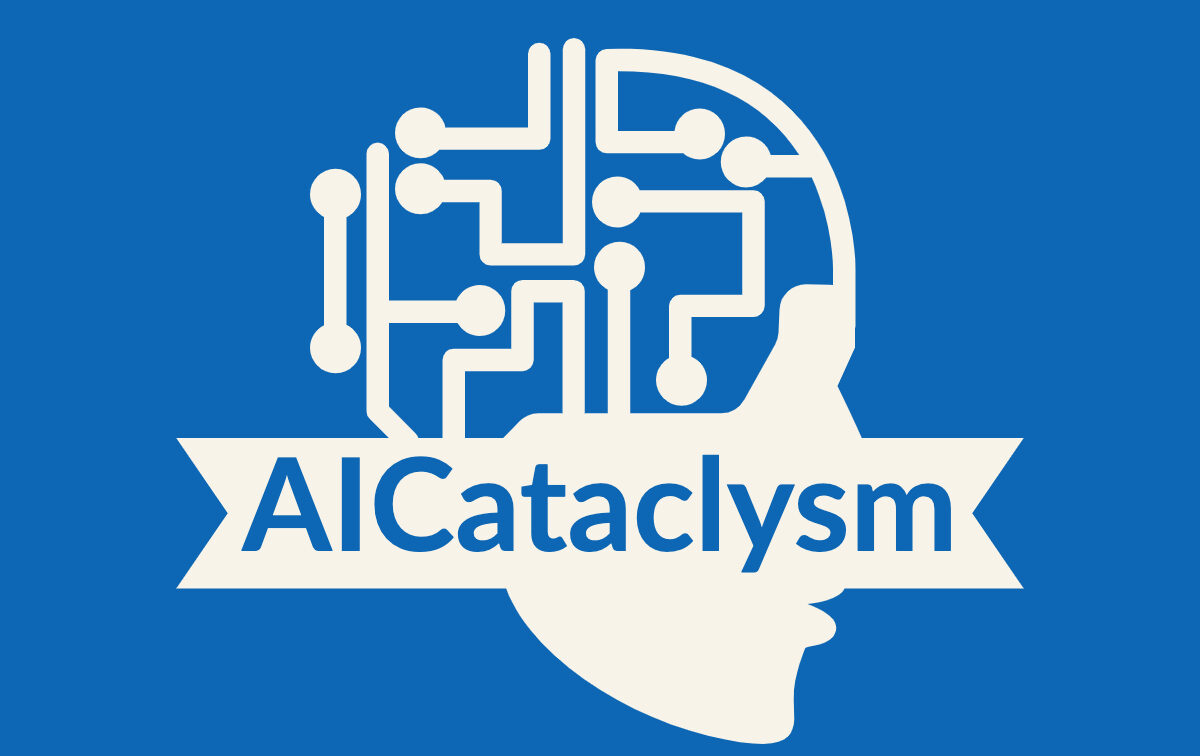Artificial Intelligence (AI) has become a game-changer in numerous industries, revolutionizing the way we approach problem-solving and decision-making. But have you ever wondered if AI requires strong math skills? Let’s dive into the world of AI algorithms and unravel the truth behind their mathematical foundation.
Key Takeaways:
- AI algorithms rely on math to analyze vast amounts of data and uncover hidden patterns and correlations.
- Data preprocessing, including cleaning, handling missing values, normalization, and feature transformation, is crucial for accurate predictions.
- Linear regression is a simple yet important concept in AI, while more advanced algorithms like neural networks enable modeling of complex relationships.
- The power of mathematics empowers businesses to make data-driven decisions and optimize various processes.
- AI designers play a pivotal role in creating and implementing AI solutions, requiring a strong technical background and an understanding of the business domain.
The Importance of Data Preprocessing
Data preprocessing is a crucial step in preparing data for AI algorithms. It involves several tasks, including data cleaning, handling missing values, data normalization, and feature transformation. These processes ensure that the data used for analysis is accurate, reliable, and optimized for AI predictions.
The Process of Data Preprocessing
Data cleaning is the first step in preprocessing. It involves removing any outliers, inconsistencies, or irrelevant information from the dataset. This ensures that the data is free from errors or noise that could impact the accuracy of AI predictions.
Handling missing values is another important aspect of data preprocessing. Missing values can occur for various reasons, and they need to be addressed before analysis. This can be done by imputing the missing values using appropriate statistical techniques or by excluding the corresponding data points.
Data normalization or scaling is necessary to ensure that features are on a similar scale. This step improves the accuracy of predictions by preventing certain features from dominating the analysis due to their larger values. Normalization techniques, such as min-max scaling or z-score normalization, are commonly used in AI preprocessing.
Feature transformation techniques are applied when there are issues like skewness or non-linear relationships in the data. These techniques, such as logarithmic or power transformations, help address these issues and ensure that the data is better suited for AI analysis.
Table: Example of Data Preprocessing Techniques
| Preprocessing Task | Techniques |
|---|---|
| Data Cleaning | Outlier detection and removal, handling inconsistencies |
| Handling Missing Values | Mean imputation, median imputation, exclusion of data points |
| Data Normalization | Min-max scaling, z-score normalization |
| Feature Transformation | Logarithmic transformation, power transformation |
By performing these data preprocessing techniques, AI models are able to analyze clean and optimized data, leading to more accurate predictions and reliable insights. The importance of data preprocessing cannot be overstated, as it ensures that the foundation for AI analysis is strong and robust.
Linear Regression: A Simple Starting Point
Linear regression is a fundamental concept in predictive modeling. It serves as a simple starting point for understanding the role of math in artificial intelligence. In this technique, we aim to find the best-fit line that represents the relationship between input features and the predicted output.
The model learns the coefficients that determine the equation of the line through optimization techniques such as ordinary least squares (OLS). These techniques minimize the squared differences between the predicted and actual values, allowing us to make accurate predictions.
By analyzing the data and finding the optimal line, linear regression enables us to uncover patterns and relationships in a straightforward manner. It provides valuable insights into the predictive capabilities of AI models and lays the foundation for more advanced algorithms.
| Input Features | Predicted Output |
|---|---|
| Feature 1 | Output 1 |
| Feature 2 | Output 2 |
| Feature 3 | Output 3 |
Linear Regression Example
To illustrate the concept of linear regression, let’s consider a simple example. Suppose we have a dataset of house prices and their corresponding sizes. The input feature, in this case, is the size of the house, and the predicted output is the price.
Below is a table showing a subset of the data:
| House Size (in square feet) | Price (in dollars) |
|---|---|
| 1000 | 150,000 |
| 1500 | 200,000 |
| 2000 | 250,000 |
Using linear regression, we can find the best-fit line that represents the relationship between house size and price. This line can then be used to predict the price of a house based on its size. The coefficients learned from the optimization process allow us to make accurate predictions.
Linear regression serves as a stepping stone in understanding the math behind predictive modeling in AI. It demonstrates the importance of optimization techniques and the power of math in uncovering patterns and making accurate predictions. While linear regression is a basic concept, it forms the basis for more advanced algorithms, such as neural networks, which can model complex relationships.
Beyond Linear Regression
When it comes to AI, linear regression is just the tip of the iceberg. Advanced algorithms like neural networks take AI to the next level by utilizing complex mathematical operations to predict intricate relationships.
Neural networks are the backbone of many AI applications. By leveraging interconnected layers of nodes, these algorithms can process and analyze data, making predictions on a wide range of complex problems.
Neural networks are designed to mimic the human brain, allowing them to handle non-linear relationships and uncover patterns that may be difficult to detect using traditional statistical models. Through a series of mathematical operations, neural networks can learn from data and make accurate predictions, even in situations where the relationships between variables are intricate and multifaceted.
These advanced algorithms have revolutionized industries such as healthcare, finance, and technology. They have the power to predict disease outcomes, optimize financial portfolios, and enhance user experiences. By harnessing the mathematical operations at the core of neural networks, AI can unlock new possibilities and drive innovation in various domains.
Table: Comparing Linear Regression and Neural Networks
| Linear Regression | Neural Networks |
|---|---|
| Simple modeling technique | Complex modeling technique |
| Assumes linear relationships between variables | Handles non-linear relationships between variables |
| Limited predictive capabilities | Powerful predictive capabilities |
| Requires explicit feature engineering | Can learn features automatically |
| Interpretable | Less interpretable |
As AI continues to evolve, so does the need for advanced algorithms and mathematical operations. Neural networks have paved the way for AI to predict and understand complex relationships, enabling organizations to make data-driven decisions and unlock untapped potential. By embracing the power of mathematics, we can fully harness the capabilities of AI and drive innovation in the digital age.
The Power of Mathematics
Mathematics is at the core of AI’s predictive capabilities. It enables us to uncover patterns, identify relationships, and make accurate predictions. Through the use of mathematical formulas and optimization techniques, AI models can process and learn from vast amounts of data, generating valuable insights.
By leveraging the power of mathematics, AI algorithms can analyze complex data sets and discover hidden correlations that human analysts may not have been able to find. The ability to uncover these patterns and relationships allows AI to make accurate predictions and provide valuable recommendations in various fields, such as finance, healthcare, and marketing.
With the use of mathematical techniques, AI models can analyze historical data, identify trends, and make predictions about future outcomes. For example, in the financial industry, AI algorithms can analyze market data and historical patterns to predict stock prices or assess the risk of investments. In healthcare, AI can analyze patient data to predict disease outcomes or recommend personalized treatment plans. These accurate predictions can have a significant impact on decision-making and lead to improved outcomes.
| Mathematics in AI | Uncover Patterns | Identify Relationships | Accurate Predictions |
|---|---|---|---|
| Mathematics forms the foundation of AI’s predictive capabilities. | AI algorithms analyze data to uncover hidden patterns and correlations. | Mathematical techniques help AI identify relationships between variables. | By leveraging math, AI models make accurate predictions and generate valuable insights. |
| Math enables AI to process and learn from vast amounts of data. | Discovering patterns allows AI to make predictions and provide recommendations. | Identifying relationships helps AI understand complex data sets. | Accurate predictions in finance, healthcare, and other industries drive better decision-making. |
Embracing the Possibilities
When it comes to harnessing the power of AI, embracing data-driven decisions is key. With its ability to analyze vast amounts of data and uncover valuable insights, AI has the potential to greatly impact various industries. From improving healthcare outcomes to optimizing manufacturing processes, the possibilities are endless.
In the healthcare sector, AI can leverage mathematical models to analyze patient data and provide personalized treatment plans. By identifying patterns and correlations in large datasets, AI can assist healthcare professionals in making more accurate diagnoses and recommending tailored treatments. This data-driven approach has the potential to revolutionize healthcare, leading to better patient outcomes and improved quality of care.
In the realm of manufacturing, AI can optimize processes by identifying inefficiencies and recommending improvements. By analyzing production data, AI can uncover patterns and correlations that may not be immediately apparent to human operators. This allows for more efficient resource allocation, reduced downtime, and increased productivity. With AI-powered optimization, manufacturers can achieve higher levels of efficiency and competitiveness in today’s fast-paced global market.

As we continue to embrace the possibilities of AI, it’s important to remember that the power lies in the hands of those who understand and utilize the math behind it. By leveraging mathematical models, algorithms, and optimization techniques, businesses can make data-driven decisions that drive innovation and lead to sustained success.
Benefits of Data-Driven Decisions:
- Improved healthcare outcomes through personalized treatment plans
- Optimized manufacturing processes for increased efficiency and productivity
- Identification of patterns and correlations that may not be immediately apparent
- More accurate diagnoses and tailored treatments in healthcare
- Efficient resource allocation and reduced downtime in manufacturing
“The possibilities of AI, driven by math, are vast and offer significant opportunities for various industries.”
By embracing the possibilities of AI and making data-driven decisions, businesses can unlock the full potential of this transformative technology. The impact of AI is far-reaching, and by understanding and harnessing the math behind it, we can drive innovation, improve outcomes, and lead the way towards a brighter future.
Conclusion
The field of artificial intelligence (AI) is powered by mathematical formulas and optimization techniques. These mathematical foundations allow AI models to analyze data, uncover patterns, and make accurate predictions.
AI predictions are not based on magic or guesswork, but on the careful analysis of mathematical relationships within the data. By leveraging mathematical formulas and optimization techniques, AI models can process and learn from vast amounts of data, generating valuable insights.
The combination of AI and math has the potential to revolutionize industries and drive innovation. From improving healthcare outcomes to optimizing manufacturing processes, AI’s transformative technology can lead to significant advancements in various fields.
In conclusion, understanding the math behind AI predictions is crucial for unlocking the full potential of this incredible technology. By harnessing the power of mathematical formulas, AI designers can develop solutions that empower businesses to make data-driven decisions and achieve remarkable results.
What Is an AI Designer?
An AI designer is a key player in the realm of artificial intelligence solutions. As an AI designer, my role involves creating and implementing cutting-edge AI technologies to address real-world problems. I work closely with clients to understand their needs and develop algorithms that provide innovative solutions.
With a strong technical background in machine learning and a deep understanding of the business domain, AI designers are well-equipped to tackle complex challenges. We navigate the entire AI project lifecycle, from conceptualization to deployment, ensuring that the solutions we develop are both effective and efficient.
As an AI designer, I utilize my expertise to drive the development of user-centric AI solutions. By collaborating with clients and stakeholders, I design and implement AI systems that meet their specific requirements. Through careful planning, creation, and implementation, I strive to ensure that AI technologies enhance user experiences and deliver valuable outcomes.
Responsibilities of an AI Designer
| Responsibilities | Description |
|---|---|
| Requirement Analysis | Gather and analyze client requirements to understand the problem and desired outcomes. |
| Algorithm Development | Create and implement machine learning algorithms to solve specific problems. |
| Model Evaluation | Test and evaluate the performance of AI models to ensure accuracy and reliability. |
| User-Centric Design | Develop AI systems with a focus on delivering optimal user experiences. |
| Collaboration | Work closely with stakeholders, developers, and other team members throughout the project lifecycle. |
| Deployment | Ensure successful deployment of AI solutions by overseeing the implementation process and addressing any issues that arise. |
AI Designer vs. AI Architect
When it comes to the world of AI, two key roles are often mentioned: AI designer and AI architect. While both roles contribute to the development and implementation of AI applications, they have distinct responsibilities and focus areas.
An AI designer is primarily concerned with creating and implementing AI applications that solve specific problems. They possess a deep understanding of machine learning techniques and algorithms, as well as a strong grasp of the business domain they are working in. AI designers work closely with clients to identify their needs and design AI systems that meet those requirements. They are responsible for the entire lifespan of the AI project, from concept development to deployment.
On the other hand, an AI architect focuses on designing the underlying architecture or framework that enables AI applications to function effectively. They have a strong technical background and expertise in scalability and performance considerations. AI architects design the infrastructure that supports AI applications and ensures their smooth operation. They work closely with AI designers and other stakeholders to determine the technical aspects of AI application design.
While AI designers and AI architects have different responsibilities, their collaboration is essential in delivering successful AI projects. AI designers provide the domain expertise and application-specific knowledge, while AI architects ensure the technical feasibility and efficiency of the AI solution.
AI Designer Job Role
As an AI designer, my responsibilities involve the planning, creation, and implementation of AI solutions. I work closely with clients to understand their needs and design AI systems that meet those needs effectively. One of my key tasks is ensuring that the solutions are user-centric, providing a seamless and intuitive experience for end users.
Throughout the AI project lifecycle, I play a vital role in collaborating with team members and stakeholders. Effective communication and collaboration skills are essential as I work with developers to convey the design vision and ensure its successful implementation. By utilizing my background in computer science or a related field, I bring technical expertise to the table, enabling me to contribute meaningfully to the development process.
AI designers are at the forefront of creating innovative solutions that leverage AI technology. We understand the potential that AI holds in revolutionizing industries and strive to make data-driven decisions that lead to optimized outcomes. By combining technical knowledge with creativity, we are able to identify opportunities for AI implementation and develop user-centric solutions that address the specific needs of our clients.
AI Designer Responsibilities:
- Analyze client needs and requirements to design AI systems
- Ensure AI solutions are user-centric and provide a seamless experience
- Collaborate with team members and stakeholders throughout the project lifecycle
- Utilize technical expertise to effectively communicate design vision to developers
- Create innovative solutions that leverage AI technology
- Make data-driven decisions to optimize outcomes
Being an AI designer is an exciting and challenging role that allows me to bring together the realms of technology and user experience design. By understanding the responsibilities within this role and embracing the potential of AI, I am able to contribute to the development of cutting-edge solutions that drive innovation and empower businesses.
AI Designer Skills
As an AI designer, my role is to bridge the gap between cutting-edge technology and exceptional user experiences. To succeed in this field, I need a diverse set of skills that encompass both AI technology and user experience design.
First and foremost, a deep understanding of AI technology is essential. I need to stay updated on the latest advancements, algorithms, and frameworks in the AI landscape. This knowledge enables me to identify opportunities where AI can enhance user experiences and solve complex problems.
In addition to AI expertise, I must have a solid foundation in user experience design. This involves understanding user behavior, conducting user research, creating wireframes, and designing intuitive interfaces. By combining AI technology with user-centric design principles, I can create AI solutions that are not only powerful but also easy to use and understand.
Coding skills are also crucial for an AI designer. Being proficient in programming languages like Python allows me to transform ideas into functional prototypes. This hands-on approach enables me to iterate quickly and test different AI models to achieve the desired outcomes.






